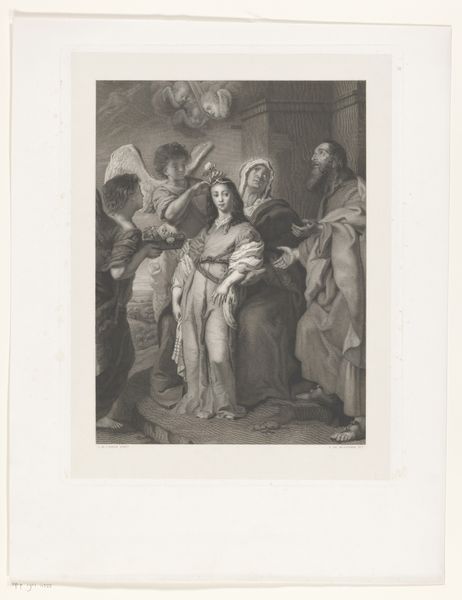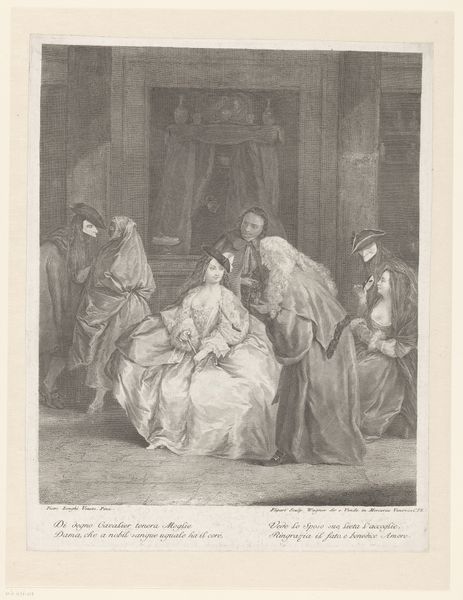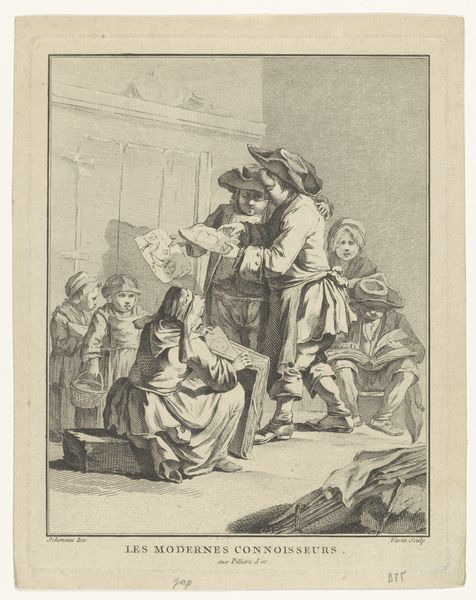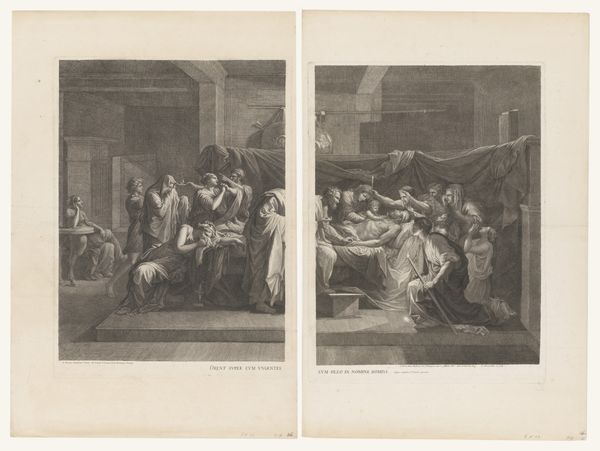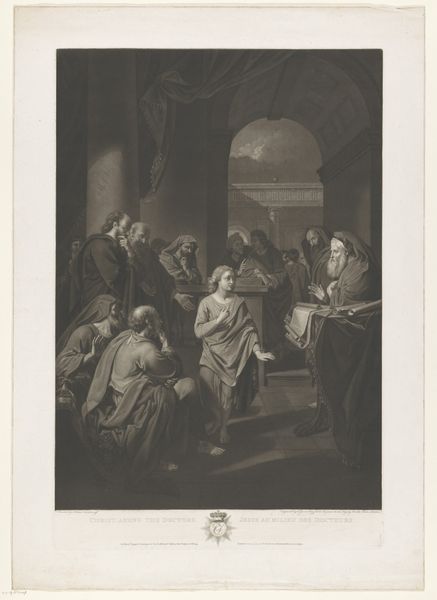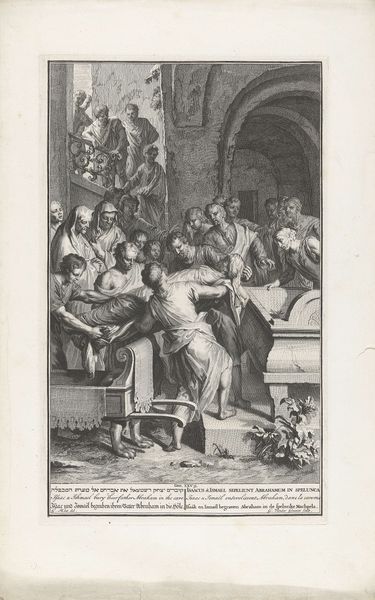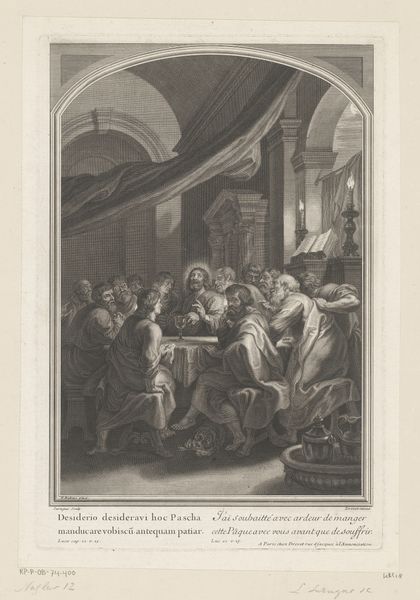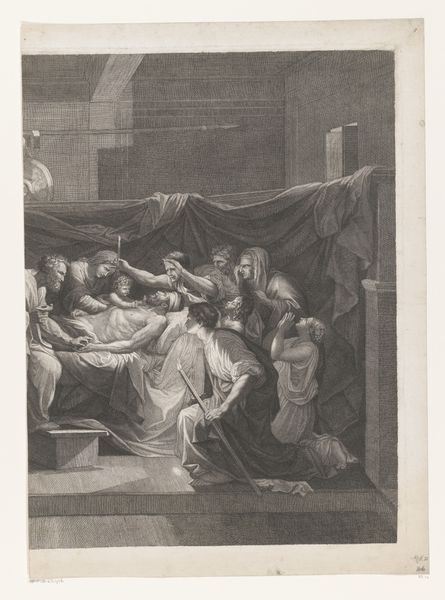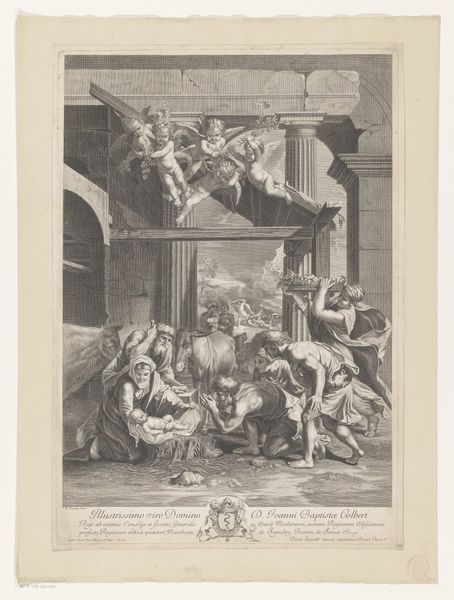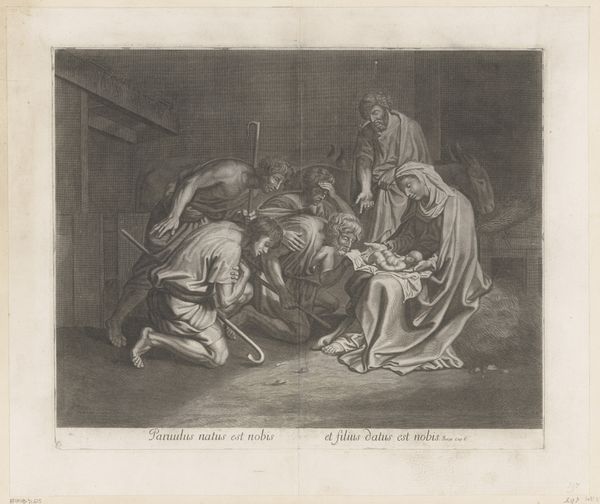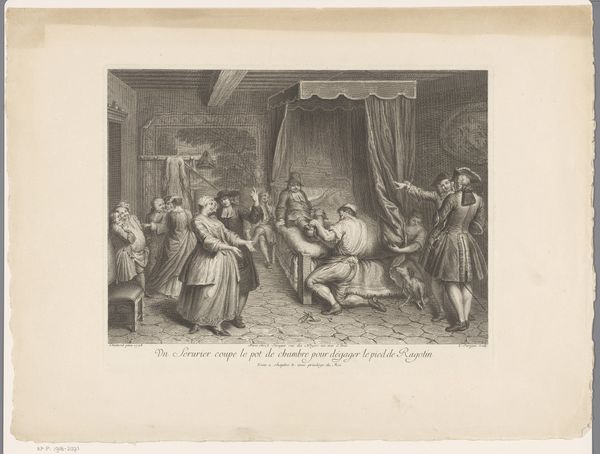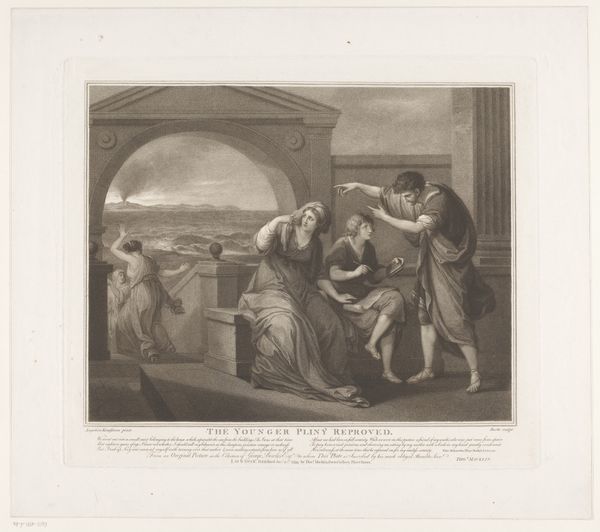
engraving
#
narrative-art
#
baroque
#
figuration
#
line
#
history-painting
#
engraving
Dimensions: height 610 mm, width 451 mm
Copyright: Rijks Museum: Open Domain
Editor: We’re looking at "Heilig Oliesel (linker deel)" by Jean Pesne, created between 1680 and 1694. It’s an engraving, and the scene is quite striking, almost theatrical in its composition. It seems to be brimming with emotions—grief and quiet resignation. What strikes you most about its visual presentation? Curator: The elegance of the engraved line, of course. Note how the artist uses varying densities of hatching to create a compelling tonal range. See the way that light seems to define the drama—it directs the viewer's eye through the arrangement of figures and establishes a clear sense of depth. Are you struck by how this focus shapes the scene? Editor: Definitely. The light really does lead you around. But why use line alone? It’s very… stark. Curator: Precisely. The linearity eschews painterly effects. Consider the pure form presented; the figures’ poses, the draping fabric. Pesne offers a classical aesthetic in the articulation of sorrow; all of which invites a deeper formal reading. What do you make of the figure arrangement? Editor: They seem posed, very deliberate, creating distinct geometric patterns across the image. Like a choreographed scene, even. It definitely amplifies the theatrical feel I mentioned earlier. Curator: It is through this structured arrangement that the scene’s narrative is distilled to its emotional core. By simplifying the scene to its core elements—line, form, light, and arrangement—Pesne emphasizes the work’s powerful narrative through its compositional elements alone. It begs the viewer to dissect it structurally for complete understanding. Editor: It's amazing how much can be conveyed simply through form. I’m certainly looking at it differently now. Curator: Indeed, and hopefully, gaining a greater understanding of the visual language at play in Baroque art and the power of line in expressing emotion.
Comments
No comments
Be the first to comment and join the conversation on the ultimate creative platform.

